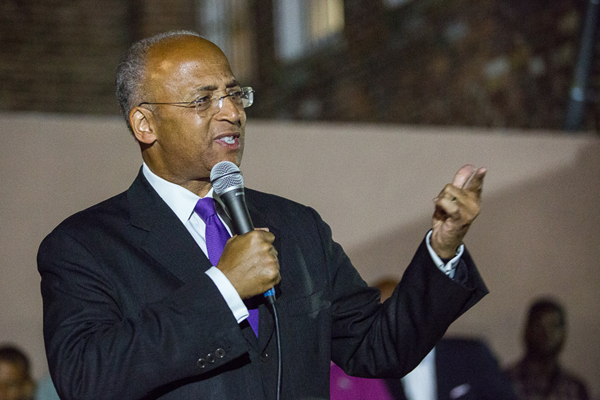
Photo by: Karla Ann Cote
In 2009, pre-election polls predicted a 12- to 15-point win by Mayor Bloomberg over Bill Thompson, who ended up losing by a mere 4 points. Thompson’s share of the 2013 primary vote, however, was fairly accurately pegged by some surveys.
Huge. Enormous. Crazy. Commanding. We’re running out of adjectives to describe the lead that Bill de Blasio enjoys over Joe Lhota in polls of people likely to vote in the November 5 general election. Today the New York Times/Sienna survey pegged the lead at 68 percent to 19 percent. A day earlier Quinnipiac said it was 71-21. A couple weeks back, Marist had de Blasio 65, Lhota 22.
Qualifications abound, and the pollsters and press note them. The Times, for instance, today revealed that on several key issues voters are more likely to agree with Lhota’s position than de Blasio’s—the kind of differentiation that will be Lhota’s goal in each of the three televised debates that will occur over the next four weeks. Simply getting a little more name recognition might help the Republican nominee. De Blasio has received a lot more press than Lhota; on primary night, at least one TV network cut away from Lhota’s acceptance speech in favor of other coverage. So the gap will likely narrow.
History also offers cautionary tales. On the eve of the 2009 mayoral election, Quinnipiac had Mayor Bloomberg defeating Bill Thompson by 12 points. Marist pegged the gap at 15. On Election Day, Bloomberg won by a mere 4.4 points.
Right before the vote in 2005, Marist predicted Bloomberg would win by 34 points. Quinnipiac upped its estimate of the mayor’s advantage from 28 points, on November 1, to 38 points on November 7. When the votes were counted, Fernando Ferrer lost by 19 points—a landslide, for sure, but one that was roughly half as wide as predicted.
It’s worth noting that in this year’s primary, the polls were pretty close to target. Quinnipiac, in particular, called it nearly perfectly, predicting de Blasio 39, Thompson 25, Quinn 18. The
voters went 40-26-16. It’s also true that while polls in ’09 and ’05 got the spread wrong, they got the winners right.
The question, of course, is whether the polls affected the outcome—whether Bloomberg voters were lulled into staying home by polls that showed their man was a shoe-in, or Ferrer and Thompson supporters decided their candidates were lost causes and stayed on the sidelines. If the polls themselves didn’t have that effect, the media coverage they generated may have. In our Primary Day reporting in Brownsville, one woman said she was guided by the polls in selecting her candidate: She voted for the guy who was in the lead.
Because of the potential for polls to affect election outcomes, some countries restrict how close to an election polls may be conducted. Such a policy wouldn’t pass First Amendment muster here. The best way to prevent polls from shaping outcomes would be to focus coverage more on substance than horse-race—something that the Lhota campaign is making easier now by actually putting out some policy prescriptions.








